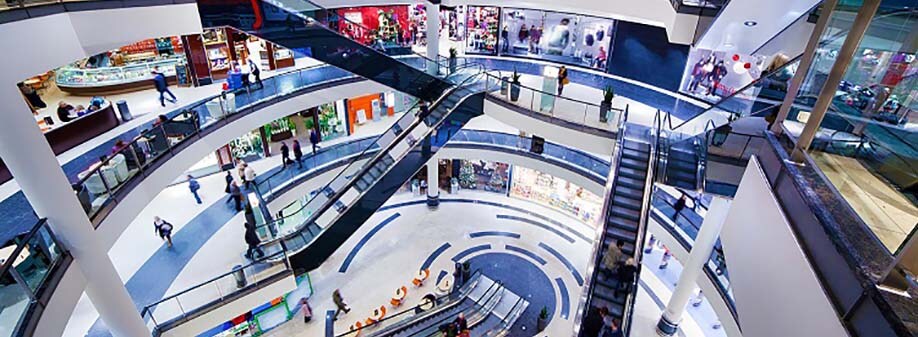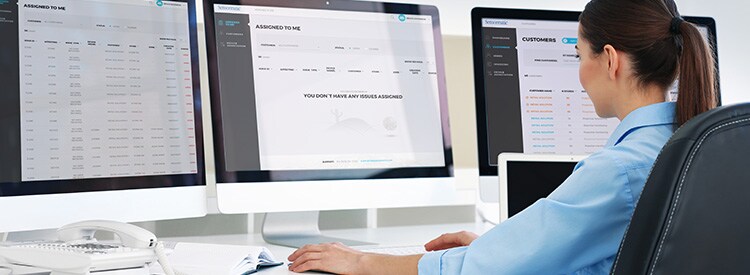Article
5 types of store your shopping centre needs to consider

As every retail property management organisation knows, success is down to getting the right mix of tenants. Finding the best combination not only attracts greater retail footfall, but encourages shoppers to visit more stores during their visit – increasing their length of stay, and also the amount they are likely to spend.
The challenge when trying to perfect this tenant mix is that no two shopping centres are created equal. A number of different factors will determine the popularity of certain store types – from global and regional location, to local demographics, and whether the mall is in or out of the town centre.
Consumer behaviour is also highly influential when it comes to perfecting your tenant line-up. Earlier this year we identified 6 types of shopper that retailers should have on their radar, looking at the varied traits that different consumer groups exhibit. Shopping centres need to be just as aware as retailers, as the type of shoppers visiting your venues will shape everything from store location to marketing strategy.
That being said, ShopperTrak’s experience in the shopping centre market has taught us that there are certain store types all retail property management should consider when looking to create the ideal mix of tenants. Here are five examples to bear in mind:
- Anchor stores
The anchor store is the stalwart of the shopping centre. Big name brands that are nationally – even internationally – recognised, which have the pulling power to bring in visitors from the surrounding area.
Retail property management companies need to look at including a number of anchor stores within their tenant mix, to drive consumer traffic simply through the popularity of the chosen brands. Knowing who to select relies on knowing the consumers that visit your centres, in order to map suitable retail brands against key demographics. Once you’ve narrowed it down, you can then look at which retailers do not have a sizeable/comparable bricks-and-mortar presence in your local area, to avoid competition.
- Convenience stores
While there are some consumers who will visit a shopping centre for a day out, others will pop in on their way to or from somewhere else to grab a few essential items. With this in mind, retail property companies need to consider whether the needs of time pressed shoppers – perhaps on their lunch break, or on their way to pick the children up from school – are being adequately met.
Typical sectors that attract convenience shoppers are healthcare, cosmetics, grocery and even fast fashion. While it’s down to the retailer to make sure the service on offer is as speedy as possible, you can profit from ensuring the right mix of stores are there when shoppers need to pick up a forgotten item or an essential purchase.
- Flagship stores
Within some stores, anchor stores and flagship stores can be one and the same, however there is a difference between the two. Flagship stores tend to push the boundaries of customer experience further than their wider store estate. Whether changing up the layout, offering new products, experimenting with in-store technology, or diversifying their brand experience, there’s a sense of innovation surrounding them that inspires and excites consumers.
Encouraging retailers to invest in flagship stores within your shopping centres creates more than a sense of prestige; it can generate media headlines, change traffic flow through the mall as shoppers flock to see what’s going on, and establishes an innovative platform that you can build on by planning your own experiential shopper engagement campaigns.
- Connected (omnichannel) stores
While the vast majority of retailers with a bricks-and-mortar presence also sell online, how they connect these channels can have a huge impact on shopping centre footfall. One prominent example of this is click-and-collect.
European retail property specialist, Hammerson, has found that up to 80% of click-and-collect visitors go on to spend more during their shopping centre visit – either in other stores or by purchasing food or beverages.
This states a clear business case for not only attracting retailers that offer cross-channel services, but for setting up central click-and-collect points that enable shoppers to pick up purchases from multiple retailers at the same time.
- Leisure and entertainment facilities
Not strictly a store type, but the mix of leisure and entertainment facilities available in a shopping centre is just as important as the combination of retail tenants.
As we discussed in our recent Redesigning Retail report, the mall has become a hub for the growing ‘shoppertainment’ trend; consumers combining retail activities with lifestyle activities such as eating or drinking out, going bowling or visiting the cinema.
Understanding the breakdown of your visitors is critically important here, to find the right mix of restaurants, cafés, bars and leisure facilities to encourage shoppers to stay longer and spend more.
Get to know your business better with ShopperTrak Analytics Suite
Getting the right mix of tenants in place is just the start for property management organisations. Your next task is to understand in granular detail how consumers behave on their journey through your shopping centres and where footfall is most active, to ensure each store or facility is in the right location to add value, and your rental income is being optimised based knowing the premium areas.
ShopperTrak’s Analytics suite can help shopping centre owners and operators not only track and analyse shopper data and behaviour, but turn it into actionable insights that make a significant impact on your bottom line.
Explore Related Topics

Ready to see how Sensormatic Solutions can transform your bottom line?
Contact UsStay one step ahead with our articles, insights and latest news.
See more

Sensormatic News Desk

